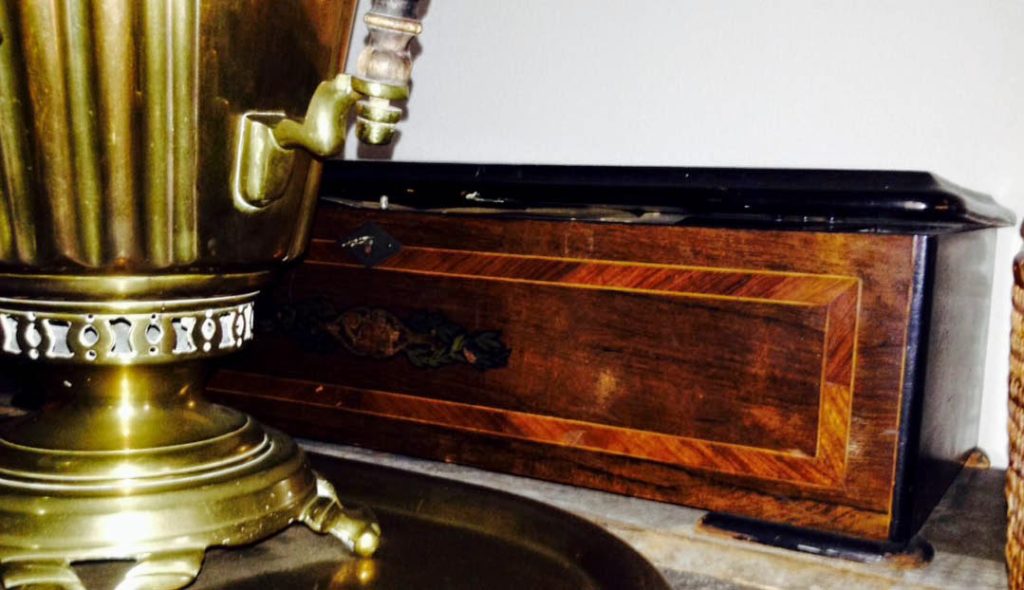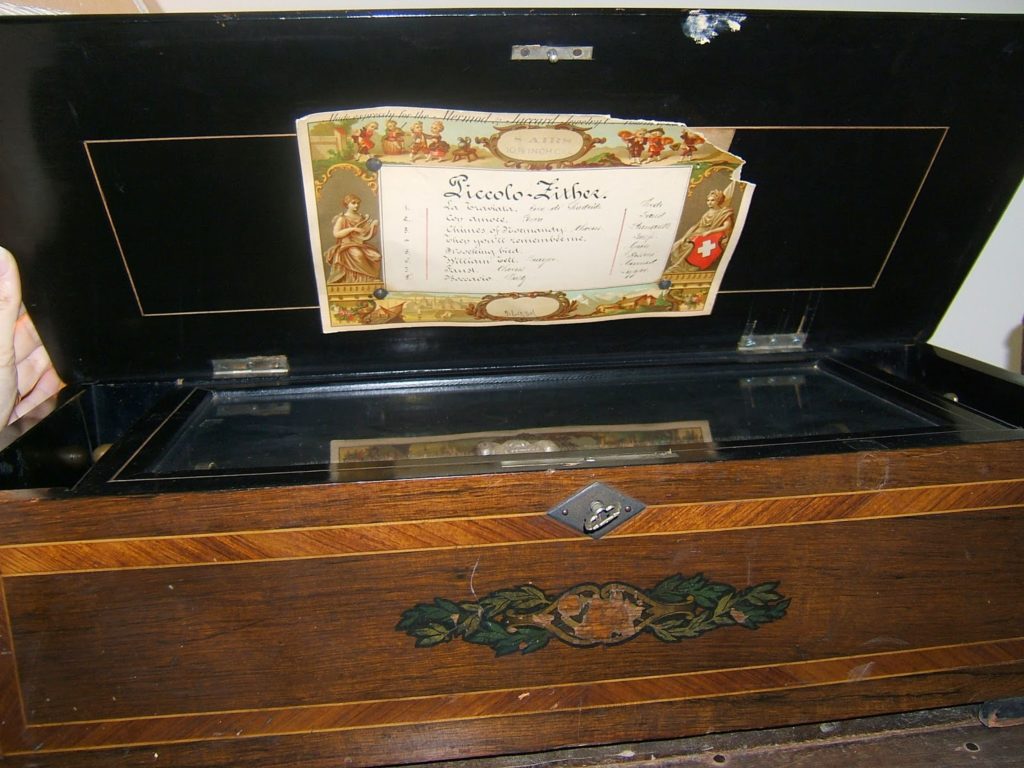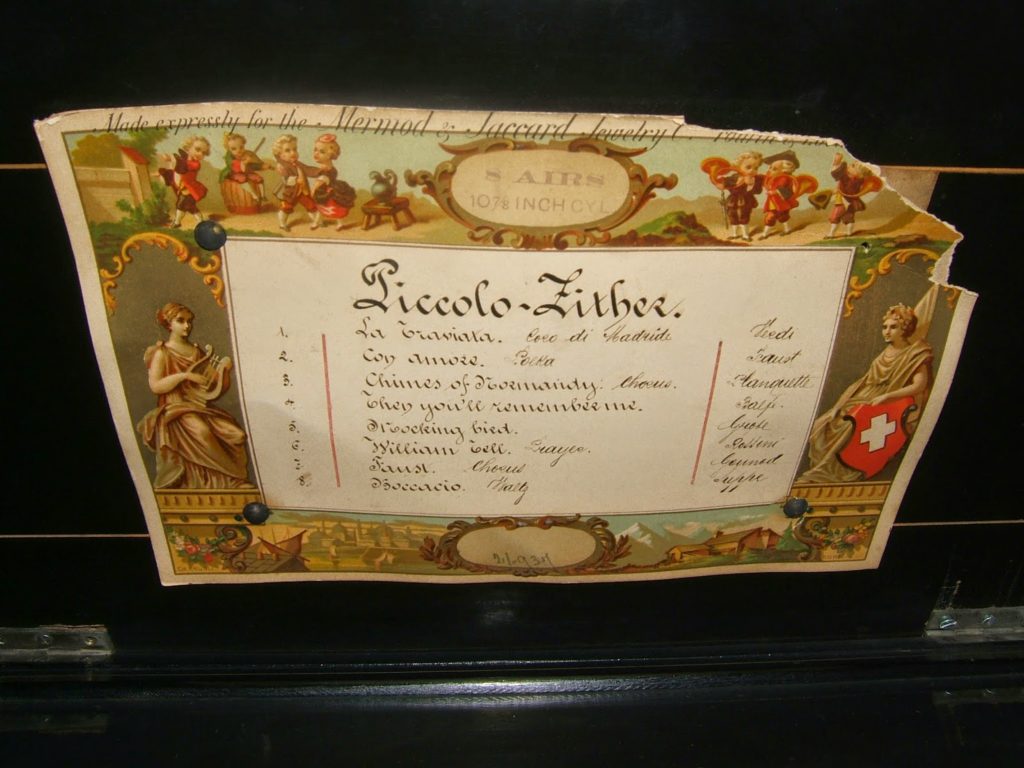If you have walked into the Marianne Moore room, you may have noticed an inlaid wooden box lurking behind a lamp and a samovar on the tall chest of drawers right in front of you.
 |
| Ch. Knusli,music box. Zurich, 1873-1894. 2006.2966. The Rosenbach of the Free Library of Philadelphia |
It turns out that this item is a music box, made in Switzerland by Ch. Knusli. It was “Made expressly for the Mermod & Jaccard Jewelry Company,” in the third quarter of the 19th century. Mermod & Jaccard was a St. Louis company owned by A. S. Mermod, a friend of Marianne Moore’s grandfather who was called “Uncle Mermod” by the young Marianne. Moore’s grandfather’s house in Kirkwood, Mo. (where Marianne lived until she was six) contained many Mermod & Jaccard items, some of which were gifts from Mermod.
Interestingly, according to an 1883 History of Saint Louis City and County, Mermod’s partner, D.S. Jaccard, had been born in St. Croixe, Switzerland,
and began his jewelry apprenticeship by working on music boxes. An index to one of Mermod & Jaccard’s catalogs, which I was able to find online, lists a page of music boxes, right before five pages of clocks.
If you lift the lid on our box, the interior contains a cylinder mechanism player, underneath a glass lid. A label on the underside of the box lid indicates the available songs:
1. La Traviata, Coro di Madrid, Verdi
2 Con Amore, Polka, Faust
3. Chimes of Normandy, Chorus, Planquette
4. Then You’ll Remember Me, Balfe
5. Mockingbird, Grobe
6. William Tell, Prayer, Rossini
7. Faust, Chorus, Gounoud
8. Boccacio, Waltz, Suppe
 |
| Ch. Knusli,music box. Zurich, 1873-1894. 2006.2966. The Rosenbach of the Free Library of Philadelphia |
 |
| Ch. Knusli,music box. Zurich, 1873-1894. 2006.2966. The Rosenbach of the Free Library of Philadelphia |
Cylinder music boxes work by striking the teeth of a metal comb with fixed pins inserted into a rotating cylinder. In boxes which could play multiple tunes (such as this one), the pins for the tunes not being played would pass between the teeth and therefore not sound. At the end of a song the cylinder would shift so a new set of pins would line up with the teeth and the next tune could play.
We don’t know the state of the mechanism, so we can’t wind our music box, but I found some other music box renditions of many of the songs that it included. These are not from the same model as we have and I could only find many of them on disc music boxes, rather than cylinder music boxes. Disc boxes were developed in the late 1880s and had the advantage of being able to play any number of tunes, simply by switching the discs. Nonetheless, I hope these videos can give at least some idea about the kind of music Marianne’s family would have enjoyed.
Eventually music boxes gave way to phonographs, which would reproduce any type of sound from spoken word to a full orchestra. We also have a number of Marianne Moore’s records, but that is the subject of another post.
 Kathy Haas is the Associate Curator at The Rosenbach of the Free Library of Philadelphia and the primary poster at the Rosen-blog.
Kathy Haas is the Associate Curator at The Rosenbach of the Free Library of Philadelphia and the primary poster at the Rosen-blog.
